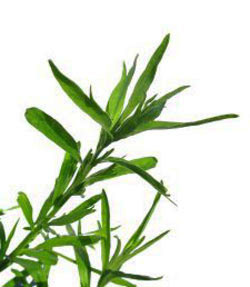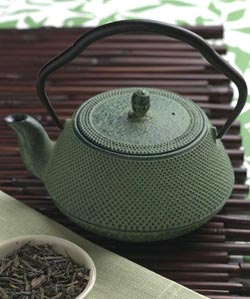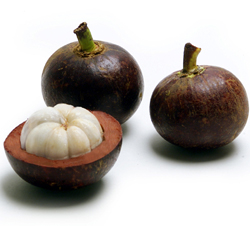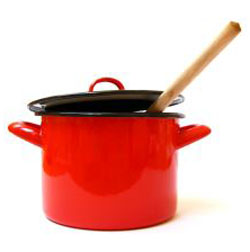A Guide To High-Antioxidant FoodPage 6: Issues With Evaluating Antioxidant Foods This is Page 6 of an eight-page article. Click on the red links below to visit other pages.This glossary is protected by copyright and cannot be reproduced in whole or part. You are welcome to link to it.
|
 Blueberries are a favorite high-ORAC-value food. In the winter, sweeten frozen blueberries with a bit of agave nectar. Photo courtesy BlueberryCouncil.org. |
|
|
Issues With Evaluating Antioxidant Foods There are several issues that need to be addressed,* that will take years to sort out. So, it’s good to eat “high antioxidant foods.” But unlike other prescriptions for health—an aspirin a day can help ward off heart attacks, for example—no one can tell you how much of the antioxidant food will have the desired effect. *Thanks to reader Diane Welland, M.S., R.D., a food and nutrition writer, for contributing some observations. ORAC Values Can Compare “Apples & Oranges” Even if there were an unassailable list of apples-to-apples ORAC values for all antioxidant foods, we are still waiting for the clinical research that indicates what quantities of the food are required to have an optimal (or even basic) antioxidant effect. The various studies present their numbers in different ways, not only for ORAC values (which vary depending on the lab and the way they assay), but also on measurements of different antioxidant evaluations such as TAC (total antioxidant capacity) and FRAP (ferric ion reducing antioxidant power). Most serving sizes are based on 100 gram portions (3-1/2 ounces), which may be relevant in some foods, like berries, but totally unmanageable in categories like spices (who can eat 3-1/2 ounces of tarragon or oregano) or chocolate and nuts (the calories alone would contribute to a weight problems—as noted above, 3-1/2 ounces of chocolate is three portions on any normal diet). The Efficacy Of Antioxidants In Different Foods There may not be a direct relationship between ORAC value and the food ingested for efficacy—how much of a specific antioxidant is effective against a specific condition. Do you need the same amount of green tea catechins—whether ounces, teaspoons or cups, or other measure—to (as is suggested by studies) protect against lung, prostate and breast cancer as you do, need, say, cacao flavonoids to inhibit the platelet aggregation that can cause a heart attack or stroke? Otherwise stated, think of having to eat drink eight cups of tea per day versus eight cups of of chocolate. One has zero calories, the other, even made with water and artificial sweetener, will rack up quite a calorie tab. How Much Do You Need To Eat For “Benefits?” There are no “generic” antioxidant benefits. Each food’s phytonutrients appear have a different efficacy—be it to suppress liver cancer, breast cancer, Alzheimer’s or other disease. Given how early we are in our understanding of how any particular antioxidant effect works in humans, it will be years before anyone knows, e.g. how many blueberries a day keep the doctor away, versus how much mangosteen, versus açaí, cranberry, cacao, etc. Some foods can engender a practical challenge. The curcurmin in the spice turmeric is a powerful antioxidant, with anti-inflammatory, antibacterial, stomach-soothing, and liver- and heart-protecting effects. Certainly, it will be a challenge for many to work a teaspoon—much less 3-12 ounces—into a daily food plan. Does Antioxidant Capacity Decline With Freshness? What happens to fruits and vegetables—particularly the highly-touted rainforest fruits—that are not grown domestically and have to be shipped from so far away? We know that sugars and other components begin to convert as soon as fruit is picked; does this happen with antioxidants as well? Some fruits like açaí don’t travel well and are processed into juice immediately, but what about mangosteen? What Happens When You Cook The Food? Preparation and cooking effect antioxidants, but studies have just begun to scratch the surface here. Raw isn’t always best when it comes to fruits and vegetables; studies have shown that canned tomatoes have more antioxidants than the raw fruit. Certain cooking and preparation methods can increase the antioxidant power, either by breaking down cell walls and releasing more of the phytonutrient, or by increasing absorption (combining olive oil with canned tomatoes is an example of this). |
 Tarragon, in the photo above, has a high antioxidant content that offers anti-inflammatory and antiviral protection; it may also help to protect the liver and improve immune function. But the high ORAC value shown in the chart is for 3-1/2 ounces: That’s a huge salad of tarragon leaves (and a very expensive one at that). Photo by Zsuzsanna Kilián | SXC.
|
Last Updated Apr 2018
© Copyright 2005-2025 Lifestyle Direct, Inc. All rights reserved. All images are copyrighted to their respective owners.


